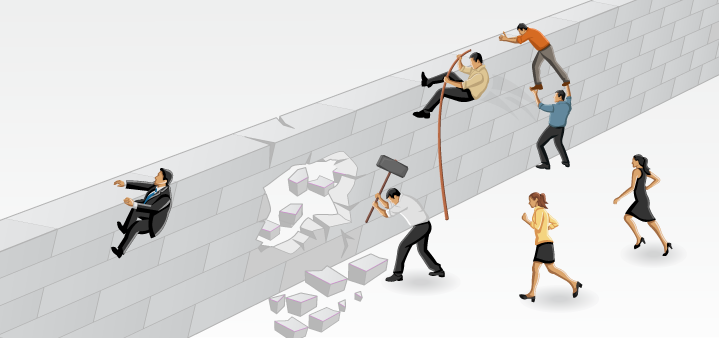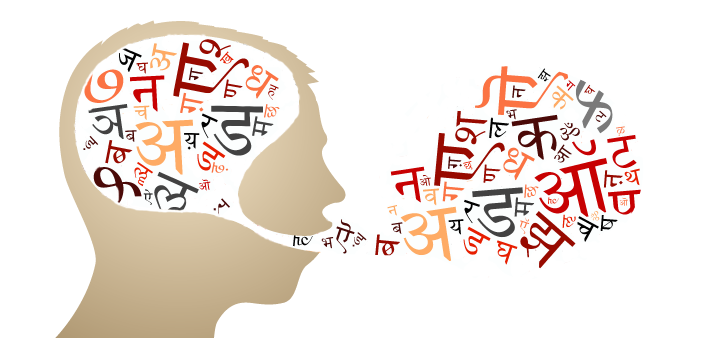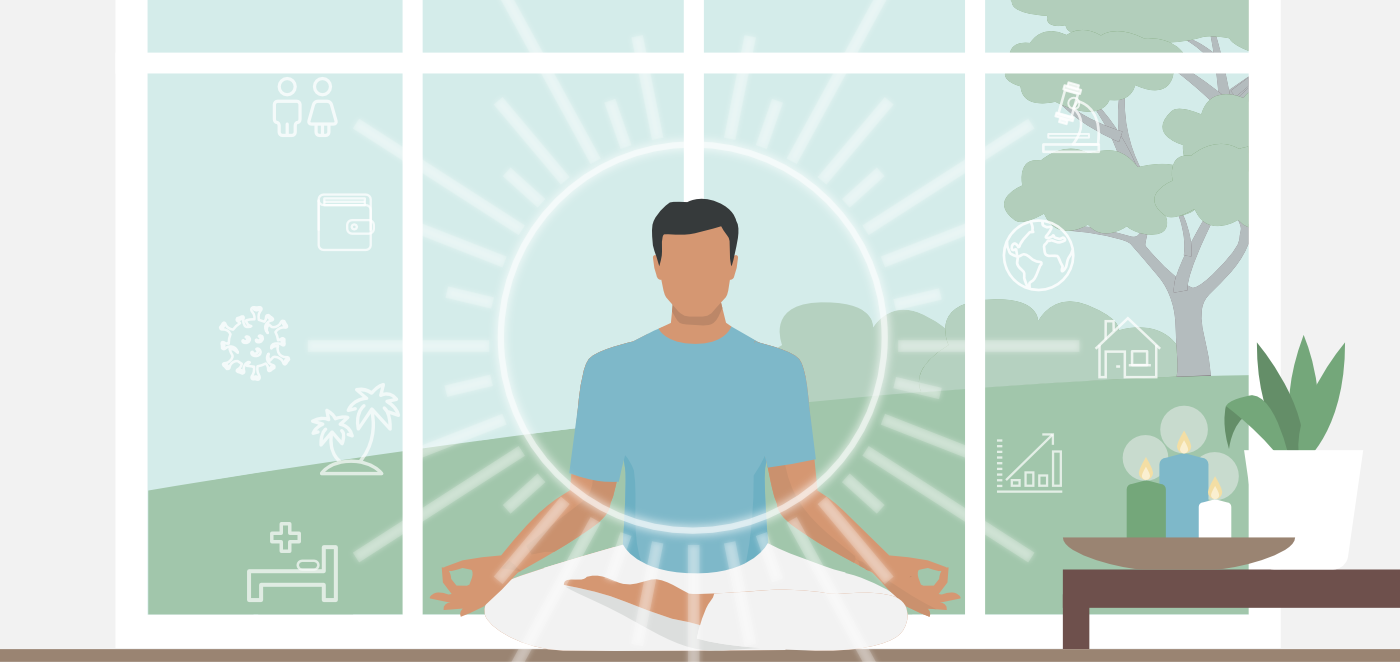Does the way you see the world limit you or empower you? Four steps to change your thinking patterns

What do you think is the most effective yogic tool for working with the intellectual mind? Is it meditation? Nope. Meditation helps you to observe and focus the mind, but not necessarily change it. To quote my yoga teacher Gary Kraftsow, “If somebody is a jerk and begins to meditate, he will become a very focused jerk.” To be able to change the way your brain does things, you need to be able to understand the tendencies of your mental process and have some framework in place that shows you a better way of doing things. Simply put, it is not enough to observe your mental activity; you need to be able to step in and direct it according to some chosen blueprint to accomplish whatever it is that you want to accomplish. According to the yoga tradition, we do it by text study.
Traditionally, text study refers to studying ancient texts, like The Upanishads, for example. In a modern context, you could benefit from studying both ancient and modern texts; they are equally fascinating and for different reasons. Changing the way your mind works and responds to things is not an easy task. It involves several steps:
Step 1. Learn how the brain works
“It’s only through knowing your brain that you can change it.”(1) You can get enormous benefits from reading books and reflecting on the way the brain works from the perspective of modern neuroscience. Resources on this subject abound, and they are fascinating. They can help you understand the capacity of your brain and its limitations. They will help empower you by showing you the best way to approach tasks and also help you cut yourself some slack.
“As you learn more about your brain, you begin to see that many of your foibles and mistakes come down to how your brain is built. You can’t think about a complex work situation and walk around the house at the same time (which I discovered the hard way, jamming my toes under the door.) It’s not you; it’s your brain. You can’t learn to do anything new and complex—such as learn to ride the subway in Japan without an interpreter—without your limbic system firing up from uncertainty. In this state, you’ll make mistakes (which I also learned the hard way, getting rather lost one day). It’s not you; it’s your brain. And you can’t go into a meeting at four o’clock in the afternoon and expect yourself and everyone else to come up with brilliant ideas. It’s not you or them; it’s your brain. So, next time you’re tough on yourself, you can say, “Oh, that’s just my brain.” [It is] probably much better than trying to suppress your frustration about your own foibles.”(1)
Yoga teachers benefit greatly from studying Patanjali’s Yoga Sutra-s since a big part of the text is dedicated to explaining how the mind works. It is not an accident that it is called “Patanjali yoga darshana,” not yoga philosophy. Philosophy, by definition, means “love of argument” and suggests an effort to impose somebody’s framework on the visible world/reality in order to make sense of it. Darshana, on the other hand, comes from the Sanskrit root “drsh” – “to see”. It means “observation of things the way they are.” It aims to see the world for what it is, and its concerns are very concrete and this-worldly.
Step 2. Observe your mind
“There is something important, universal, and therefore biological about being able to step outside and observe your moment-to-moment experience.”(1) To be able to effectively facilitate learning, strengthen memory, promote creativity, train attention, expand mental horizons and rid ourselves of unnecessary mental chatter we need to be able to step out of our habitual thinking patterns and see the big picture. “Without this ability to stand outside your experience, without self-awareness, you would have little ability to moderate and direct your behavior from moment to moment. Such real-time, goal-directed modulation of behavior is the key to acting as a mature adult. You need this capacity to free yourself from the automatic flow of experience and to choose where to direct your attention. Without a director, you are a mere automaton, driven by greed, fear, or habit.”(1)
Step 3. Choose a blueprint to follow
What’s important to you? How do you want to live your life? In many religious traditions, the course is predetermined, important milestones are in place, and moral values are explicitly stated – all of that is recorded in the religious texts of that tradition. By studying those texts and following the recommendations, you wire your mind a certain way.
If you don’t feel connected to any specific tradition, you can adopt a different one that resonates with you. The yoga tradition has its own code of ethics and a path laid out to help focus the mind, break identifications with your thoughts, overcome whatever obstacles show up along the way, and achieve a state of bliss that’s not conditional on the temporary ups and downs of life. Yoga tradition aims to control the tendency of the mind to define itself through external objects so that you could get a glimpse of your true nature. All of this is contained in the yoga sutras. Reading the text, reflecting on it, discussing it with others, and integrating it into your practice through chanting both expands and focuses the mind.
Step 4. Use tools to change habitual thinking pattern according to the blueprint of your choice
Many tools suggested by modern neuroscience are equivalent to the yoga tradition. Cognitive reassessment is called pratipaksha bhavana, impasse (or mental roadblock) is called antaraya (an obstacle), and neuroplasticity describes the same phenomenon as samskara. Yogic definitions of those concepts tend to be very succinct, while modern science describes them in much more detail. This is why it is always fascinating to use one to inform the other; I believe that this expands our understanding of those concepts and provides a more complete, in-depth picture.

We can use concepts that are present in both yoga tradition and neuroscience to help us change our habitual thinking patterns. “It’s not hard to change your brain. You just need to put in enough effort to focus your attention in new ways.”(1) This helps you facilitate “self-directed neuroplasticity” or rewiring of the brain.










Thanks for the post! So often yoga related teachings make it seem like if you could just meditate better your problems would go away, but it’s not that simple. I’m a big fan of the observe, then alter, method of mental training. An author I really like is Dan Seligman who wrote [i]Learned Optimism[/i]. He explains exercises that you can use to become conscious of your mental dialogue and then train yourself to use a better dialogue (monologue?) that leads to more freedom and happiness. It’s hard work, but I’ve found it incredibly helpful.
One hangup, though: philosophy means “love of knowledge” from the Greek phileo + sophia (love + wisdom). I think the argumentative interpretation comes from sophism, which means something more like arguing just for the sake of it, or for pomp without desire for truth (http://www.english-for-students.com/soph.html)
Just catching up on all your posts. Thanks for your generosity, sharing your knowledge & experience. I love how you connect the sutras with everyday situations & current thinking in recent publications . . .always keeping it relevant!
Hi Pamela, how are you? The more I read about modern neuroscience, the more I am amazed about the depth of the sutras. When you think about it, we were humans then and we are humans now with all the same issues, so it’s not surprising that those who choose to observe human nature closely arrive at similar conclusions